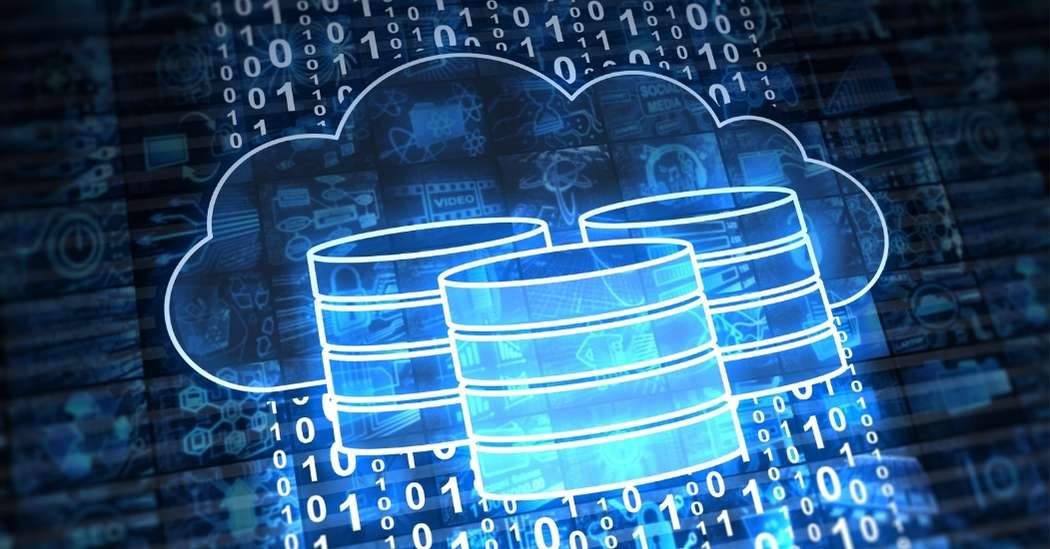simpleserversetup.com: The Complete Guide to Easy and Reliable Server Setup
In today’s digital-driven world, setting up and managing servers has become an essential skill for both individuals and businesses. From hosting websites and storing files to running applications and databases, servers are the backbone of modern computing. However, many people find the process overwhelming due to the technical details involved. That is exactly where simpleserversetup.com comes in. It provides straightforward, step-by-step guides and valuable resources to help users configure, optimize, and manage different types of servers without unnecessary complexity.
Whether you are new to servers or an experienced IT professional, this guide will walk you through the essentials of server setup, explain why server configuration matters, and highlight how simpleserversetup.com simplifies the process.
Also Read: Why www. eurotechtalk.com
Why Server Setup Matters More Than Ever
A properly configured server is the foundation of a smooth digital experience. Whether you are running a personal website, an e-commerce store, or a corporate database, the server is the engine that powers everything behind the scenes. When set up correctly, servers provide:
- Performance: Fast response times ensure users don’t get frustrated with delays.
- Security: Configurations protect sensitive data from cyber threats.
- Scalability: Businesses can expand seamlessly as traffic or storage needs grow.
- Reliability: Proper setup minimizes downtime and ensures consistent availability.
The rise of cloud computing and remote work has made server reliability critical. People expect instant access to websites, apps, and files, and companies cannot afford to let misconfigured servers damage their brand. That’s why resources like simpleserversetup.com are invaluable—they help bridge the gap between technical complexity and practical solutions.
Understanding the Different Types of Servers
Before diving into the step-by-step setup process, it’s important to understand the different categories of servers. Each serves a unique role in the digital ecosystem, and simpleserversetup.com provides detailed guides for all of them.
1. Web Servers
Web servers are responsible for delivering websites and web applications to users. Popular options include Apache, Nginx, and Microsoft IIS. A well-optimized web server ensures that pages load quickly, handle high traffic efficiently, and remain secure from online threats.
2. Database Servers
Database servers store, manage, and retrieve structured data. Whether using MySQL, PostgreSQL, or Microsoft SQL Server, the configuration of a database server determines how fast and secure queries run. Businesses with large datasets rely heavily on stable database servers for real-time decision-making.
Also Read: Shortengine.com
3. File Servers
File servers allow centralized storage, access, and sharing of documents, images, videos, and more. They are especially useful in workplaces, schools, and homes where multiple users need to collaborate or back up files securely.
4. Application Servers
Application servers provide the environment necessary to run applications. They support frameworks like .NET, Java EE, and Node.js, ensuring that complex software can run efficiently across multiple devices and users.
By exploring the categories on simpleserversetup.com, users can easily learn the differences and follow customized guides for the specific server they want to set up.
Step-by-Step Guide to Setting Up Your First Server
One of the biggest strengths of simpleserversetup.com is that it breaks down complicated processes into digestible, step-by-step tutorials. Here is a simplified version of what a basic server setup looks like:
Step 1: Choose the Right Hardware or Hosting
The first decision is whether you want to set up a server using physical hardware at home or office, or go for cloud-based hosting. Cloud options like AWS, Azure, and Google Cloud offer flexibility, while physical setups provide more control.
Step 2: Select the Operating System
Linux distributions (such as Ubuntu Server or CentOS) are common for servers due to their stability and security. Windows Server is also widely used, especially in business environments.
Step 3: Install Server Software
Depending on your needs, install software packages like Apache/Nginx for web servers, MySQL/PostgreSQL for databases, or Samba for file sharing. simpleserversetup.com provides detailed installation guides for each.
Step 4: Configure Security
Security is non-negotiable. Set up firewalls, enable SSL certificates, manage user permissions, and regularly update software to keep vulnerabilities in check.
Step 5: Optimize for Performance
Performance tuning involves load balancing, caching, and resource allocation. Even small tweaks can drastically improve server response times.
Step 6: Test and Monitor
Before going live, test your server thoroughly. Once live, continuous monitoring tools like Nagios, Zabbix, or built-in dashboards can help ensure your server runs smoothly.
Following this blueprint with the help of tutorials on simpleserversetup.com ensures that even beginners can configure servers like professionals.
Common Challenges in Server Setup and How to Overcome Them
Setting up servers may sound simple, but users often face common challenges. Thankfully, platforms like simpleserversetup.com provide solutions for these roadblocks.
- Compatibility Issues: Not all software and operating systems work seamlessly together. Guides on the site help identify compatible configurations.
- Security Gaps: Beginners often overlook firewalls and encryption. Tutorials emphasize essential steps for airtight security.
- Performance Bottlenecks: Without optimization, servers can slow down under heavy traffic. The site offers practical tuning techniques.
- Data Backup: Many underestimate the importance of regular backups. Guides explain easy ways to set up automatic backup systems.
- Scalability Problems: Businesses that grow suddenly may find their servers overloaded. Simpleserversetup.com shares strategies for scaling smoothly.
Why Choose simpleserversetup.com for Your Server Needs?
With so many resources available online, you might wonder why simpleserversetup.com stands out. Here’s why it has become a go-to platform:
- Beginner-Friendly: Content is written in a simple and clear style, making it easy for non-technical users to follow.
- Comprehensive Coverage: The site covers web, database, file, and application servers all in one place.
- Actionable Guides: Instead of vague advice, it provides hands-on tutorials with practical steps.
- Security Focused: Cybersecurity is prioritized, ensuring setups are not just functional but also safe.
- Regular Updates: Server technologies evolve rapidly, and the website keeps its content fresh and relevant.
For anyone interested in learning server setup, from students to IT professionals, simpleserversetup.com is a reliable resource.
Real-World Benefits of Learning Server Setup
Taking control of your own servers provides numerous advantages:
- Cost Savings: Instead of paying third-party services, you can run your own infrastructure.
- Customization: Configure servers exactly how you want, without unnecessary features.
- Security Control: You decide what security measures to implement.
- Skill Development: Server management is a valuable skill in the job market.
- Business Growth: For companies, in-house server management allows faster scaling and better customer experience.
By following tutorials on simpleserversetup.com, users can unlock these benefits without being overwhelmed by technical jargon.
Importance of Server Monitoring and Maintenance
Setting up a server is only the beginning of the journey. The long-term performance of any server depends on how well it is monitored and maintained. Regular checks help identify issues like CPU overuse, memory leaks, and disk failures before they affect users. Many beginners underestimate the importance of monitoring tools, but they play a vital role in ensuring stability. Platforms such as simpleserversetup.com provide guidance on implementing monitoring solutions, so you can keep an eye on server health and proactively address potential bottlenecks.
Backup and Disaster Recovery Strategies
No matter how strong your server setup is, data loss can still occur due to hardware failures, cyberattacks, or human error. That’s why a strong backup and disaster recovery plan is essential. A good practice is to follow the 3-2-1 rule: keep three copies of your data, on two different types of storage, with one stored off-site. Tutorials on simpleserversetup.com often highlight how to configure automated backup systems, ensuring that your critical information is always safe and can be restored quickly when needed.
Enhancing Server Security with Best Practices
Security threats continue to evolve, making it crucial for server owners to stay ahead of potential vulnerabilities. Beyond basic measures like firewalls and SSL, advanced practices such as intrusion detection systems, regular patch management, and two-factor authentication add layers of defense. For new users, these concepts can feel overwhelming, but resources like simpleserversetup.com simplify the process by breaking down advanced security techniques into easy-to-follow steps that even non-technical users can apply.
Optimizing Servers for Remote Collaboration
As remote work becomes more common, servers play an increasingly important role in supporting collaboration across teams and locations. File servers and application servers must be optimized to handle simultaneous access without slowing down. Features like VPN access, cloud syncing, and permissions management are especially important for businesses managing distributed teams. Guides available on simpleserversetup.com explain how to set up such features, allowing teams to collaborate securely and efficiently no matter where they are.
The Future of Server Management
The server landscape is constantly changing. With the rise of edge computing, artificial intelligence, and containerization technologies like Docker and Kubernetes, server setup will continue to evolve. Automation is also becoming a key factor, allowing administrators to configure and manage servers with minimal manual input.
Platforms like simpleserversetup.com play a critical role in making sure that everyday users can keep up with these technological shifts without needing to become full-time system administrators.
Frequently Asked Questions (FAQs)
1. Can I set up a server at home using simpleserversetup.com guides?
Yes. The tutorials are beginner-friendly and explain how to use affordable hardware and open-source software to create home servers for personal or family use.
2. Do I need advanced technical knowledge to follow simpleserversetup.com?
No. The guides are written in plain language with step-by-step instructions, making them accessible even for those without an IT background.
3. Is simpleserversetup.com only for businesses?
Not at all. While businesses benefit from its database and application server resources, individuals can also use it for personal websites, file storage, and learning purposes.
Conclusion
Servers are the foundation of modern digital infrastructure, but for many people, the thought of setting one up feels intimidating. With resources like simpleserversetup.com, that complexity disappears. The platform offers practical, step-by-step guides covering web, database, file, and application servers, ensuring that anyone can configure a reliable and secure setup.
Whether you’re a student learning about technology, a small business owner wanting to cut costs, or a professional IT manager looking to optimize performance, simpleserversetup.com provides the knowledge you need. In an era where performance, security, and reliability are non-negotiable, mastering server setup through accessible resources is not just helpful—it’s essential.
Also Read:
- Markyystreams: A Complete 2025 Guide to Free Sports Streaming
- Renvoit com: The Ultimate Digital Platform for Innovation, Technology, and Lifestyle
- Kipflix: The Ultimate Guide to Free Legal Streaming in 2025
- Waters CryptoProNetworkCom: The Future of Smart Crypto Investments
- From Blog Titaniumshare: A Complete Guide for Modern Bloggers







